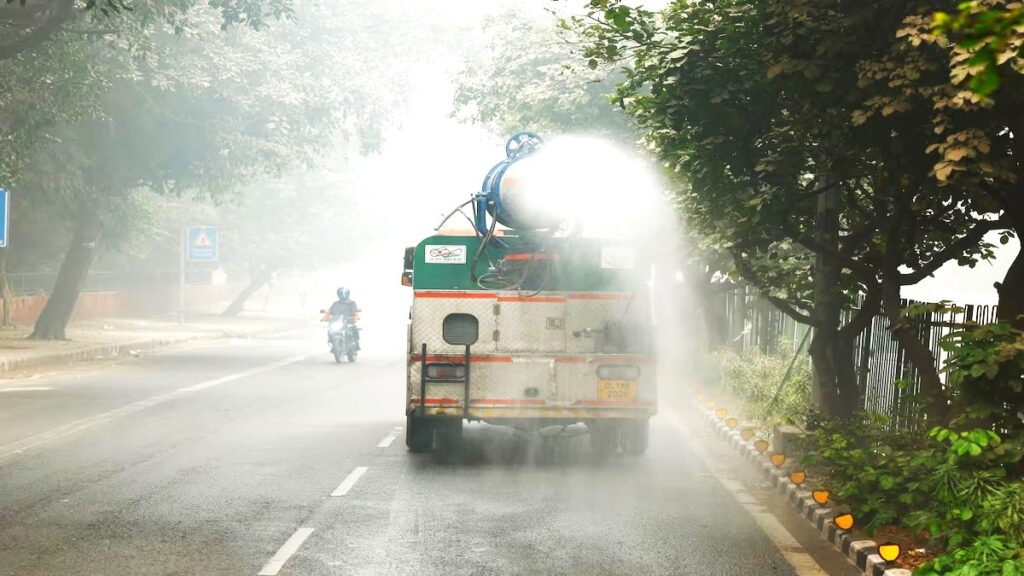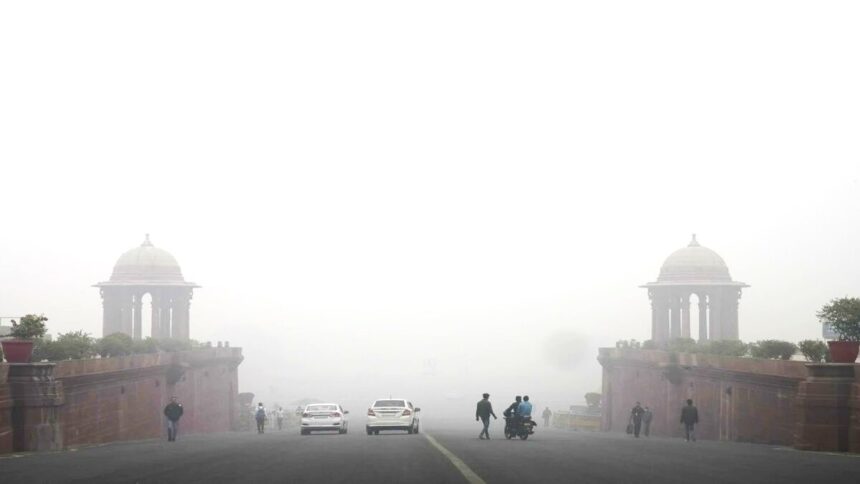Delhi, the capital city of India, has long been grappling with severe air pollution. This year, however, the situation has taken a turn for the worse, with pollution levels reaching hazardous heights. In November, Delhi’s air quality index (AQI) soared to an alarming 493, more than 30 times the World Health Organization’s (WHO) recommended safe limit, causing widespread health risks. The city’s air has become so toxic that authorities are now considering artificial measures, such as cloud seeding, to clear the toxic smog. But questions remain: Why is India struggling to address this crisis, and can artificial rain really help?
The Severity of Delhi’s Air Pollution
Air pollution in Delhi has reached catastrophic levels, causing the city to once again top the list of the world’s most polluted cities. In early November, Delhi’s AQI hit a staggering 493, marking the worst levels this year. The AQI is a tool used globally to measure the concentration of pollutants in the air. When the AQI hits the “hazardous” category, it indicates extreme levels of pollutants, particularly PM2.5—tiny particulate matter that is harmful to the lungs and can lead to severe respiratory problems.
For comparison, the WHO guidelines suggest that PM2.5 levels should not exceed 15 micrograms per cubic meter for more than three or four days a year. In Delhi, however, these levels are often more than 30 times that amount, making the air unsafe to breathe for most people, especially children, the elderly, and those with pre-existing health conditions. As a result, authorities have been forced to take drastic measures such as shutting schools, limiting office attendance, and restricting non-essential construction work in a bid to reduce the sources of pollution.
Why Does Smog Blanket Delhi Every Winter?
Delhi’s annual battle with toxic smog is primarily driven by a combination of local and regional factors. The city’s large number of vehicles, widespread coal-burning power plants, and an unregulated construction industry all contribute significantly to air pollution. However, the problem intensifies during the winter months, from October to January, due to a mix of colder temperatures and atmospheric conditions that trap pollutants near the ground.
One of the biggest contributors to Delhi’s winter smog is the practice of crop stubble burning in neighboring states like Punjab, Haryana, and Uttar Pradesh. After the harvest season, farmers burn their leftover crop residue, which sends a thick cloud of smoke drifting into Delhi, adding to the pollution. The colder temperatures and low winds in winter make it harder for the smoke to disperse, leading to the accumulation of pollutants in the air.
Additionally, the festival of Diwali, celebrated at the end of October, exacerbates the problem. Despite a ban on traditional firecrackers, many people still use them, contributing to a sharp spike in air pollution. This seasonal cocktail of pollution, combined with the lack of adequate regulatory enforcement, has made Delhi’s smog season an annual crisis.
Authorities Respond with Short-Term Measures
In response to the rapidly deteriorating air quality, Delhi’s government has been implementing emergency measures. Schools have been closed, and students have been asked to attend online classes. Businesses and offices have been instructed to operate at half-capacity to reduce vehicular emissions. Non-essential construction activities have been temporarily suspended, and non-essential trucks have been restricted from entering the city. Water tankers have also been deployed to sprinkle water on streets to reduce dust, and mechanized sweepers are being used to clean roads.
While these measures may provide some temporary relief, they are not enough to address the root causes of the pollution. Furthermore, many other cities across India, such as Gurugram, Patna, and Lucknow, have also recorded hazardous AQI levels, signaling that the problem extends far beyond Delhi.
The Artificial Rain Proposal: Can Cloud Seeding Help?
In an attempt to clear the toxic smog, Delhi’s Environment Minister, Gopal Rai, has suggested using cloud seeding—an experimental method of weather modification that involves dispersing chemicals into clouds to encourage rainfall. Rai has pushed for the federal government’s approval to carry out an artificial rain experiment, claiming that it could help wash away the smog and improve air quality.
Cloud seeding typically involves dispersing substances like silver iodide or sodium chloride into clouds to stimulate the formation of rain or snow. While cloud seeding has been used in some countries, like China, to control weather and disperse smog, it remains a contentious and unproven method in the context of Delhi’s pollution.
Many scientists are skeptical about the effectiveness of cloud seeding. Sachin Ghude, an air quality forecaster at the Indian Institute of Tropical Management, argues that the method is unlikely to solve the city’s pollution problem in the long term. He points out that cloud seeding does not address the root causes of pollution, such as vehicle emissions, industrial activity, and crop burning. Furthermore, cloud seeding requires specific weather conditions, which may not always be present, and there are concerns about the environmental impact of chemicals like silver iodide.

The Political and Institutional Challenges
The failure to address Delhi’s air pollution crisis can also be traced to political infighting and institutional shortcomings. Delhi’s government, controlled by the Aam Aadmi Party (AAP), often blames the federal government, led by the Bharatiya Janata Party (BJP), for not taking sufficient action to tackle the issue. This political blame game has hindered coordinated efforts to combat pollution, with both levels of government pointing fingers rather than collaborating on comprehensive solutions.
Additionally, while programs like the National Clean Air Programme (NCAP) and Bharat Stage Emission Standards (BSES) have been launched to curb pollution across the country, their impact has been limited. Critics argue that the NCAP focuses too heavily on individual cities rather than tackling pollution on a national scale. Moreover, the emission standards are not always enforced strictly, and state-level initiatives often lack coordination.
A Long Road Ahead
Delhi’s air pollution crisis is a complex, multifaceted issue that cannot be solved through short-term measures like cloud seeding or school closures. While these interventions may offer temporary relief, addressing the root causes of pollution—such as vehicle emissions, industrial waste, and crop burning—requires long-term policy changes, stricter enforcement of regulations, and improved public awareness.
Until comprehensive solutions are put in place, Delhi’s residents will continue to face the deadly consequences of toxic air, and the city will remain a cautionary tale of the dangers of unchecked pollution. While artificial rain may offer some hope in clearing the air in the short term, it’s clear that lasting change will require a more coordinated, holistic approach from both local and national authorities.
Read More : Kailash Gahlot Resigns from AAP, Slams Party for Prioritizing Political Ambitions Over Public Welfare






